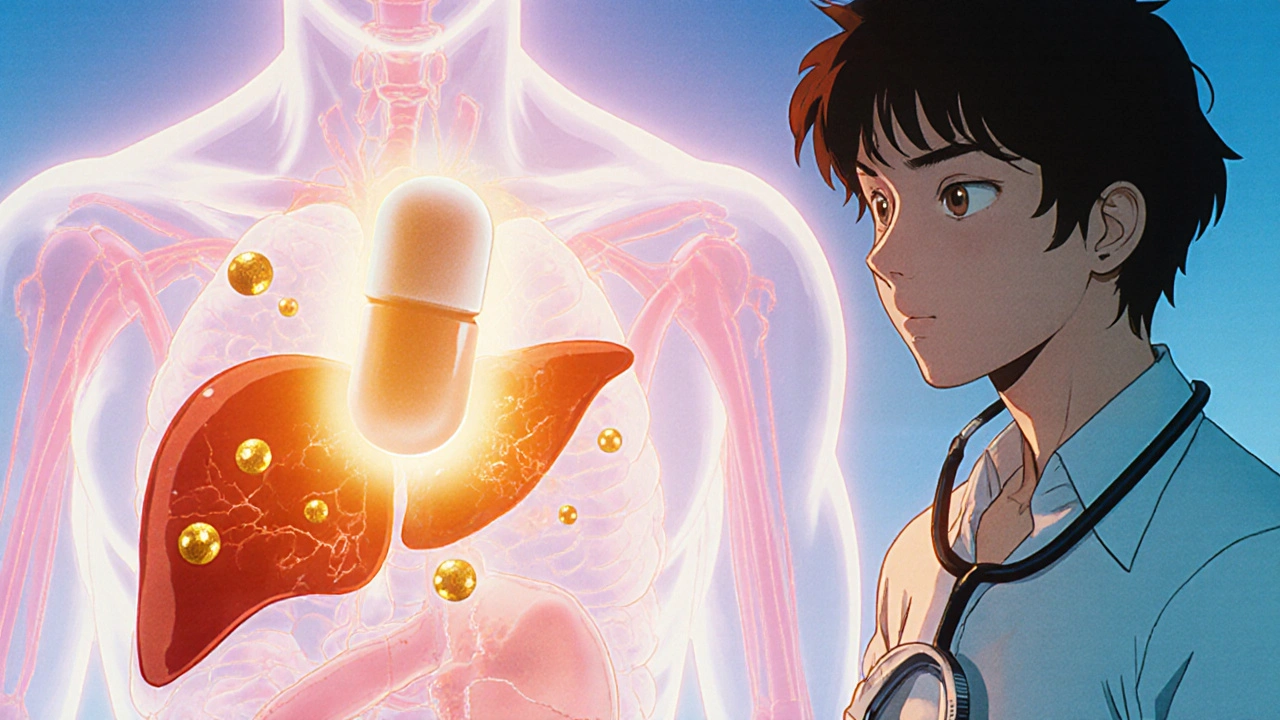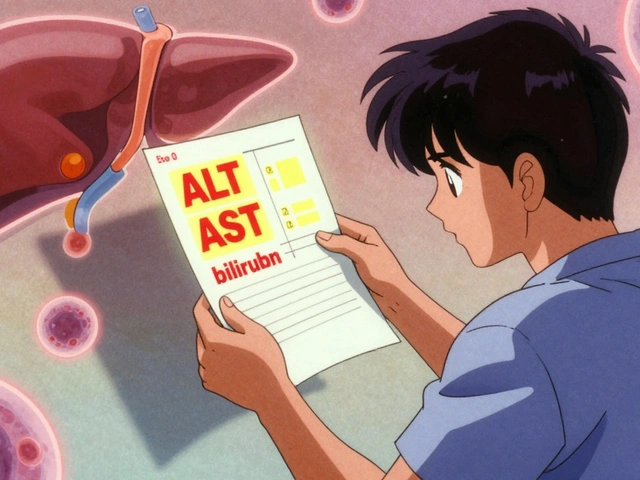
High cholesterol doesn’t always respond to diet and exercise alone. For millions of people, a statin like Crestor (rosuvastatin) becomes the next step. But is it the right one for you? Many patients start on Crestor because their doctor recommends it - but they never learn what other options exist, or how those alternatives stack up in real life.
What Crestor (Rosuvastatin) Actually Does
Crestor is a brand name for rosuvastatin, a type of statin drug. Statins work by blocking an enzyme in your liver that makes cholesterol. The result? Lower LDL (bad) cholesterol, modestly higher HDL (good) cholesterol, and reduced inflammation in blood vessels.
What sets Crestor apart is its potency. At a 20 mg daily dose, it can lower LDL by 50-60%. That’s stronger than older statins like simvastatin or pravastatin. It also has a long half-life, meaning one daily pill does the job without needing multiple doses.
Studies from the Journal of the American College of Cardiology show rosuvastatin reduces heart attack risk by about 30% over five years in high-risk patients. But potency doesn’t mean it’s best for everyone.
How Crestor Compares to Lipitor (Atorvastatin)
Lipitor (atorvastatin) is the most prescribed statin in the U.S. and one of the closest rivals to Crestor. Both are considered high-intensity statins. But here’s the real difference:
- Strength: At 40 mg, Lipitor lowers LDL by about 45-55%. Crestor at 20 mg does the same - so Crestor is slightly more potent by milligram.
- Drug interactions: Lipitor is broken down by the liver enzyme CYP3A4. That means it can interact with grapefruit juice, certain antibiotics, and antifungals. Crestor uses a different pathway (CYP2C9), so fewer interactions - making it safer for people on multiple meds.
- Side effects: Both can cause muscle aches. But studies suggest Crestor may have a slightly higher risk of new-onset diabetes, especially in people with prediabetes or metabolic syndrome.
For someone with kidney issues, Lipitor is often preferred. Rosuvastatin is cleared mostly by the kidneys, so dose adjustments are needed in moderate to severe kidney disease. Atorvastatin doesn’t require the same tweaks.
Zocor (Simvastatin) vs. Crestor: The Budget vs. Power Choice
Simvastatin (Zocor) is an older, generic statin. It’s been around since the 1990s and costs pennies compared to Crestor. But it’s also weaker and less predictable.
- Dosing: You’d need 40-80 mg of simvastatin to match 10-20 mg of Crestor. Higher doses increase the risk of muscle damage (rhabdomyolysis), especially when combined with certain drugs like fibrates or cyclosporine.
- Effectiveness: Simvastatin lowers LDL by 30-40% at high doses. Crestor hits 50%+ at half the dose.
- Cost: Simvastatin can cost under $5 a month with insurance or at discount pharmacies. Crestor, even as a generic, runs $15-$30.
For a healthy 55-year-old with mild high cholesterol and no other conditions, simvastatin might be a smart start. For someone with diabetes, heart disease, or very high LDL (over 190 mg/dL), Crestor’s strength and safety profile often win out.
Pravachol (Pravastatin): The Gentle Option
Pravastatin (Pravachol) is another older statin, but it’s known for being the mildest. It’s not as powerful, but it’s also the least likely to cause muscle pain or liver issues.
- LDL reduction: Around 20-30% at 40 mg - less than half of Crestor’s effect.
- Safety: Pravastatin is metabolized differently and doesn’t cross the blood-brain barrier easily. That may explain why it’s linked to fewer cognitive side effects in some studies.
- Best for: Older adults, people with liver concerns, or those who had bad reactions to other statins.
If your LDL is only slightly elevated and you’re worried about side effects, pravastatin could be a good first choice. But if you’re trying to hit a target LDL under 70 mg/dL - like after a heart attack - you’ll likely need something stronger than Pravachol.

Other Alternatives: Ezetimibe, Bempedoic Acid, and PCSK9 Inhibitors
Not everyone needs another statin. If Crestor causes side effects or isn’t enough, doctors may add or switch to non-statin options:
- Ezetimibe (Zetia): Works in the gut to block cholesterol absorption. Lowers LDL by 15-20%. Often combined with statins. Safe, cheap, and well tolerated.
- Bempedoic acid (Nexletol): A newer oral drug that lowers LDL by 20-25%. It’s designed for people who can’t tolerate statins. Doesn’t cause muscle pain like statins do.
- PCSK9 inhibitors (Repatha, Praluent): Injectable drugs that slash LDL by 50-60%. Used for people with familial hypercholesterolemia or those who’ve had heart events despite max statin therapy. Costly - over $10,000 a year without insurance.
Many patients don’t know these options exist. If you’re on Crestor and still not hitting your LDL goal, or if you’re having side effects, ask your doctor about adding ezetimibe or switching to bempedoic acid. You don’t have to suffer through muscle pain to protect your heart.
Who Should Avoid Crestor?
Crestor isn’t for everyone. Red flags include:
- Severe kidney disease: Dose must be reduced or avoided. Rosuvastatin builds up in the body if kidneys aren’t working well.
- Asian ancestry: People of East Asian descent metabolize rosuvastatin slower. Doctors often start with 5 mg instead of 10 mg.
- History of muscle problems: If you’ve had rhabdomyolysis with another statin, Crestor carries similar risks.
- Pregnancy or breastfeeding: Statins are not safe during pregnancy. Cholesterol is needed for fetal development.
Also, avoid Crestor if you drink alcohol heavily. It increases liver stress. And if you’re taking cyclosporine, gemfibrozil, or certain HIV meds, interactions can be dangerous.
Real-World Experience: What Patients Say
Survey data from patient forums and clinical studies show consistent patterns:
- One in four people on statins report muscle aches. With Crestor, it’s often mild and goes away after a few weeks.
- People who switch from Lipitor to Crestor often say they feel better - fewer side effects, better LDL control.
- Those who tried simvastatin and switched to Crestor say, "I finally got my numbers where they need to be."
- Patients on bempedoic acid report almost no muscle pain, but some mention stomach upset or elevated liver enzymes.
One patient from Halifax, 62, had an LDL of 210 despite diet changes. She started on simvastatin 40 mg - her muscles ached constantly. Switched to Crestor 10 mg: LDL dropped to 85. No pain. "It was the first time I didn’t feel like I was paying for my heart health with my body."

How to Decide: A Simple Checklist
Still unsure? Use this quick guide:
- What’s your LDL goal? Under 70? You likely need a high-intensity statin like Crestor or Lipitor.
- Do you have kidney issues? Then avoid high-dose Crestor. Try Lipitor or pravastatin.
- Are you on other meds? Grapefruit juice, antifungals, or HIV drugs? Skip Lipitor. Crestor is safer.
- Cost a concern? Simvastatin or pravastatin are cheapest. Generic Crestor is affordable too - ask your pharmacist.
- Had side effects before? Try bempedoic acid or ezetimibe instead of another statin.
There’s no single "best" statin. The right one is the one that lowers your cholesterol safely and keeps you taking it.
Frequently Asked Questions
Is Crestor better than Lipitor?
Crestor is slightly more potent per milligram and has fewer drug interactions than Lipitor. But Lipitor works just as well for most people and is often cheaper. The "better" choice depends on your kidney function, other medications, and how your body responds.
Can I switch from Crestor to a cheaper statin?
Yes, but don’t do it without your doctor’s help. Switching statins isn’t like switching brands of ibuprofen. Your dose needs to be recalibrated. Going from Crestor 20 mg to simvastatin 80 mg isn’t a direct swap - and 80 mg simvastatin carries higher risks. Your doctor will pick an equivalent dose based on your LDL goal and health history.
Does Crestor cause memory loss or brain fog?
Some people report memory issues with statins, but large studies - including one from the FDA with over 1 million patients - found no clear link. Any cognitive side effects are usually mild and go away after stopping the drug. If you notice confusion or memory lapses, talk to your doctor. It’s not common, but it’s worth checking.
What’s the safest statin for older adults?
Pravastatin and fluvastatin are often preferred for seniors because they’re less likely to cause muscle pain or interact with other medications. Crestor can be used too, but at lower doses - especially if kidney function is reduced. Always start low and go slow.
Do I need to take Crestor forever?
Most people do - because high cholesterol is a chronic condition. Stopping the drug usually means cholesterol climbs back up within weeks. But in rare cases, if someone makes major lifestyle changes - losing 30+ pounds, reversing prediabetes, or eliminating trans fats - their doctor may try reducing or stopping the medication under close monitoring. Never stop on your own.
Next Steps
If you’re on Crestor and doing well - keep taking it. Don’t stop because of rumors or online stories.
If you’re having side effects, don’t just live with them. Talk to your doctor about adjusting the dose, switching to another statin, or adding ezetimibe. Many people feel better once they find the right match.
If you haven’t started a statin yet, ask your doctor: "What’s my LDL goal? What’s the lowest dose that can get me there? What are my alternatives?" The right answer isn’t always the most expensive one - it’s the one you can stick with for life.





12 Comments
I switched from Lipitor to generic Crestor last year after my LDL stayed at 180 for six months. Honestly? I felt less foggy and my muscles didn’t ache like before. I’m not a doctor, but I’ve been on it for 14 months and my numbers are finally under 80. No grapefruit juice anymore though - too much hassle.
Crestor gave me brain fog. I quit. Done. 😑
It is an incontrovertible fact that the pharmaceutical industry markets potency over safety. Rosuvastatin is a marvel of biochemistry - but one must consider renal clearance, genetic metabolism, and polypharmacy before prescribing. To casually recommend Crestor without evaluating CYP2C9 activity is irresponsible. I have seen patients with East Asian ancestry suffer elevated creatinine kinase levels due to inappropriate dosing. This is not medicine - it is statistical gambling.
Let’s be real - nobody reads the whole thing. I skimmed the part about muscle pain and thought, ‘Oh great, another drug that makes you feel like you got hit by a truck every morning.’ I tried simvastatin, hated the cramps, switched to Crestor 10mg, and now I can actually walk up stairs without groaning. The cost? Yeah, it’s more than $5 a month - but I’d rather pay $20 and not feel like a 90-year-old at 58. Also, I didn’t know about bempedoic acid until now. That’s actually kind of cool. No muscle pain? Sign me up if my insurance covers it. Still, why do doctors never mention these options until you’re already suffering? Just food for thought.
Interesting how this article makes Crestor sound like a miracle drug while glossing over the fact that statins in general increase diabetes risk by 9-12%. And yet, no one talks about how lifestyle changes - real ones, not ‘eat less bread’ - can reduce LDL by 30% without a pill. I’ve seen people drop 120 points in LDL just by cutting sugar and walking 8k steps a day. Meanwhile, we’re all just popping pills like candy because it’s easier than changing habits. Also, why is the author so obsessed with potency? Maybe the goal shouldn’t be ‘lowest LDL possible’ but ‘lowest side effects while staying alive.’
This is an exceptionally well-structured comparison, particularly the breakdown of metabolic pathways. I am curious - in the context of global health disparities, how accessible are PCSK9 inhibitors in low-income countries? In India, where I’m from, even generic rosuvastatin is often unaffordable without subsidies. Meanwhile, ezetimibe is available over-the-counter in some regions, yet rarely prescribed as a first-line adjunct. Is this a knowledge gap among physicians, or a systemic failure in drug distribution? The data presented is excellent, but the real-world applicability varies drastically by geography.
My dad’s LDL was 220. He was on simvastatin 80mg - couldn’t lift his arms. Switched to Crestor 10mg. LDL down to 78. No pain. He’s 72 and now hikes every weekend. Don’t let fear of side effects stop you from asking your doc about alternatives. There’s always a better fit. You just gotta be the one to push for it.
Look, I get it - statins save lives. But let’s not pretend they’re harmless. I’ve been on Crestor for three years. My cholesterol’s perfect. My muscles? Constantly sore. My liver enzymes? Slightly elevated. I’m not complaining - I’m alive, and that’s what matters. But I wish the medical community would stop acting like side effects are just ‘annoyances.’ They’re real. They affect sleep, mobility, mood. I started taking CoQ10 and magnesium - helped a little. I also started swimming. Not because it lowers cholesterol, but because it makes me feel like I’m not just a number on a lab report. Maybe the real solution isn’t a stronger statin - it’s a more human approach to care.
Here’s the uncomfortable truth: statins are a Band-Aid on a bullet wound. You don’t fix systemic inflammation with a liver enzyme blocker. You fix it by removing ultra-processed foods, reducing chronic stress, and sleeping more than five hours a night. Crestor doesn’t cure metabolic syndrome - it masks it. And the people who profit from this? They don’t want you to know that. They want you to believe a pill can undo decades of poor choices. Wake up. Your body isn’t a car that needs a tune-up - it’s a living ecosystem. And you’re poisoning it with sugar, seed oils, and silence. Take the statin if you must. But don’t pretend you’re healing.
So… Crestor’s better than Lipitor unless you have kidney issues, unless you’re Asian, unless you’re on other meds, unless you’re pregnant, unless you drink, unless you’re old, unless you’re broke… so basically, it’s only for people who are lucky enough to have none of the above? Cool. Cool cool cool. 🙃
Thank you for this detailed, evidence-based analysis. I am a 54-year-old woman from India with familial hypercholesterolemia. My LDL was 280 before starting rosuvastatin 5 mg (due to Asian metabolism). After six months, it is 82. I have no muscle pain. I do not consume grapefruit. My doctor prescribed ezetimibe as an adjunct after three months. I am grateful. However, I have noticed that many Indian physicians still default to simvastatin due to cost - even when patients have diabetes or hypertension. This article should be translated and distributed widely. Knowledge saves lives.
This is corporate propaganda dressed as medical advice. Crestor is not ‘more potent’ - it’s more profitable. The JACC study? Funded by AstraZeneca. The ‘real-world experience’ quotes? Probably pulled from paid testimonials. The ‘checklist’? Designed to push people toward the most expensive option. Meanwhile, the real science shows that LDL is not the villain - oxidized LDL is. And oxidation comes from sugar, not saturated fat. You think a statin fixes that? No. It just hides the symptom while you keep eating Twinkies. This isn’t healthcare. It’s a revenue stream disguised as science. Stop believing the hype. Ask for a lipid panel with particle size. Ask for hs-CRP. Ask for fasting insulin. Or just keep taking your $25 pill and pretend you’re in control.